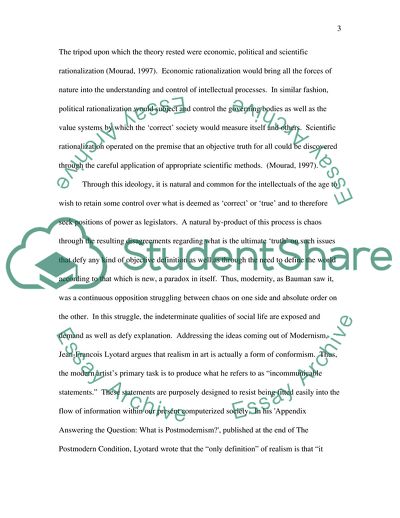Cite this document
(Postmodernity and What It Means Essay Example | Topics and Well Written Essays - 1750 words, n.d.)
Postmodernity and What It Means Essay Example | Topics and Well Written Essays - 1750 words. https://studentshare.org/philosophy/1712633-discuss-the-debate-cocerning-postmodernity-drawing-on-different-theoretical-perspectives
Postmodernity and What It Means Essay Example | Topics and Well Written Essays - 1750 words. https://studentshare.org/philosophy/1712633-discuss-the-debate-cocerning-postmodernity-drawing-on-different-theoretical-perspectives
(Postmodernity and What It Means Essay Example | Topics and Well Written Essays - 1750 Words)
Postmodernity and What It Means Essay Example | Topics and Well Written Essays - 1750 Words. https://studentshare.org/philosophy/1712633-discuss-the-debate-cocerning-postmodernity-drawing-on-different-theoretical-perspectives.
Postmodernity and What It Means Essay Example | Topics and Well Written Essays - 1750 Words. https://studentshare.org/philosophy/1712633-discuss-the-debate-cocerning-postmodernity-drawing-on-different-theoretical-perspectives.
“Postmodernity and What It Means Essay Example | Topics and Well Written Essays - 1750 Words”. https://studentshare.org/philosophy/1712633-discuss-the-debate-cocerning-postmodernity-drawing-on-different-theoretical-perspectives.


